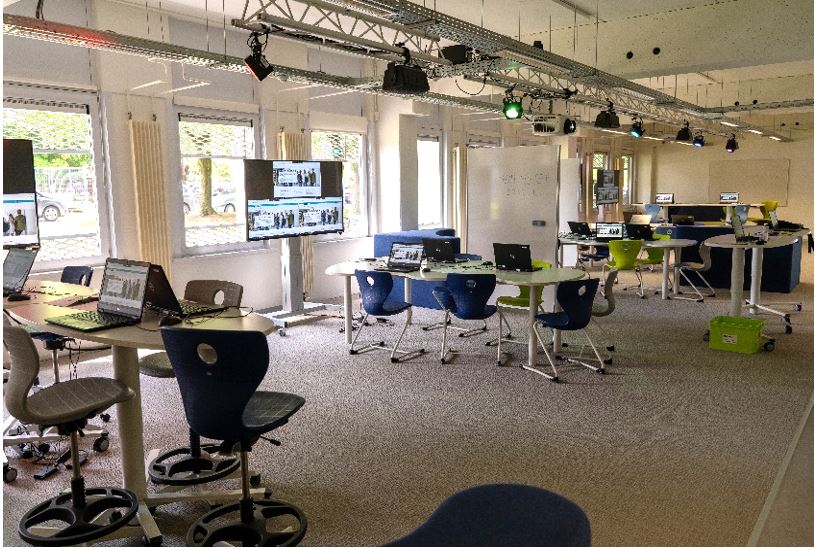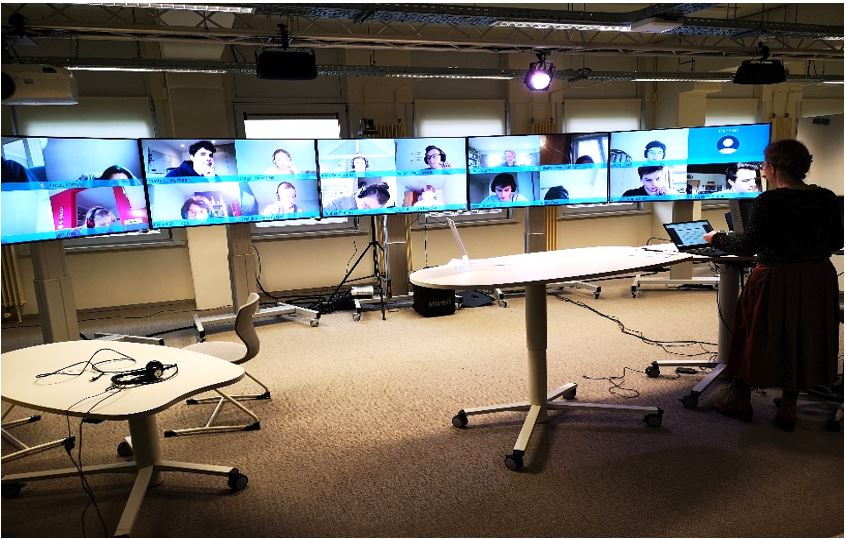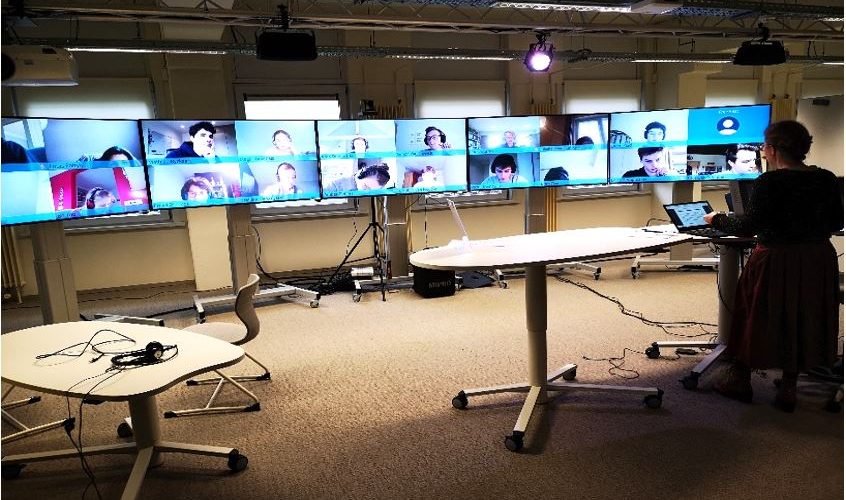On Monday, 16th of March 2020 Leuven University made the switch from physical lessons in classrooms to distance learning to comply with the federal measures regarding the coronavirus COVID-19.
The tools offered by the university are Toledo (KU Leuven implementation of Blackboard), Skype for Business for synchronous teaching and Poll Everywhere for real time interaction. Asynchronous teaching is made available with Kaltura Capture, a screencast application on personal devices and incorporated in Toledo.
Since students are not allowed to enter the university buildings because of the need to keep social distance, the auditoriums with recording equipment can also be used. This makes whiteboard annotations or the use of document camera’s possible without hassle.
Third party tools, like Zoom or Jitsi, which are more suitable than Skype for business for interaction with smaller groups (<50 students) are allowed to be used but are not supported by the IT department, so at own risk, including stability, privacy and copyright issues.
The Kortrijk Campus of the University, a campus with 1500 bachelor students in 6 faculties and over 10.000 participants in Post Academic Education, took part in the TECOL project (Technology-Enhanced COllaborative Learning). In this research project, KU Leuven invested in research on educational technology. This resulted in the installation of several collaborative learning spaces, based on Barco weConnect, which is BYOD oriented with wireless content displaying and teacher controlled screen management.

Later on, a follow-up project, called Lecture+, aimed to make distance learning as seamless and vivid as learning in face-to-face classrooms, without sacrificing the effective features of face-to-face instruction by building a synchronous ‘hybrid virtual classroom’. It connects both on-site students and individual remote students during synchronous teaching and learning, which is innovative and unique compared to the previous video- and web-conferencing platforms; the system includes improved software to connect students and the teacher to make spontaneous interaction possible.
The user experience is very spontaneous by using virtual whiteboards, hand raising, silent questions and polls on the fly (one push on a button). Based on research carried out by Imec, they concluded that teachers’ experiences in the hybrid virtual classroom exceeded their expectations they had beforehand.
So, back to March, 16th. No students, one virtual classroom (not hybrid anymore since the lack of students in the classroom) and three collaboration rooms which became useless. Time for a makeover!
In no time we moved furniture and displays together, installed USB cameras, microphones and speakers and last but not least we bought a bottle of disinfection alcohol for the cleaning of touch screens and pushbuttons to make it virus-free.

Thanks to the weConnect technology it was very easy to transform from one setting to another by only re-configuring the software.
Now, instead of three collaboration rooms we have three additional virtual classrooms, which can handle between 30 and 48 students per room in an interactive way. The four rooms are all situated next to each other, so the user support can be done by only one person, which is a very important matter in ‘coronatimes’.
Despite our belief that teachers would not leave their houses and would have preferred to use the tools on their laptops, the use of the four rooms is increasing. For the teacher, the user-friendliness of all the tools in one user interface is a great benefit of the system. Teachers are saying that this way of teaching is as good as teaching in real life. Students at home can concentrate well because they see and hear the teacher in a better way than in a classroom.

Authors
Piet Bonte &
Marieke Pieters
EdTech support
KU Leuven campus
Kulak Kortrijk














